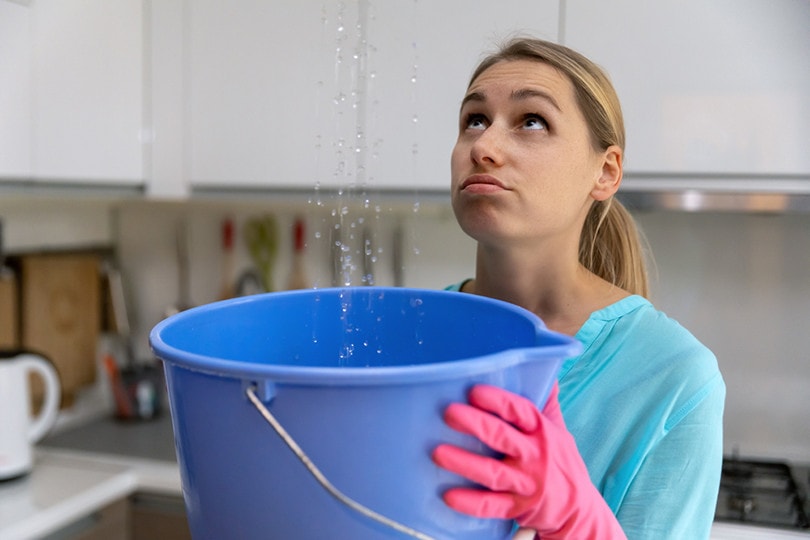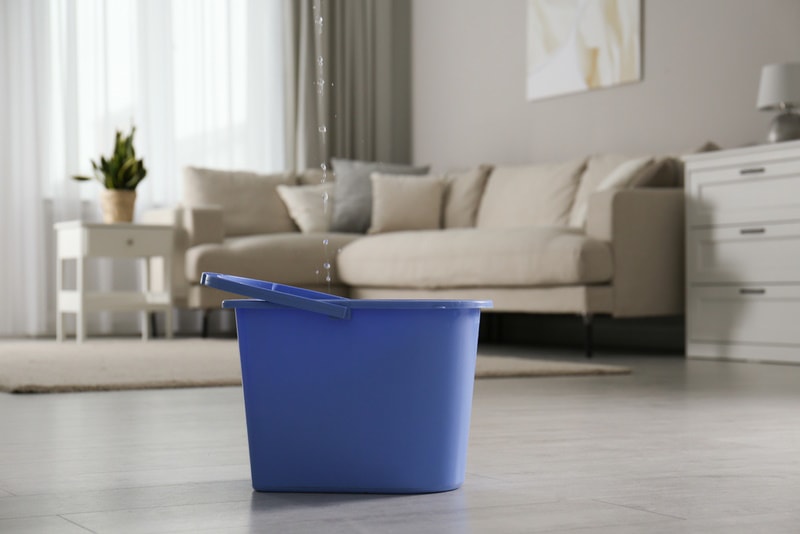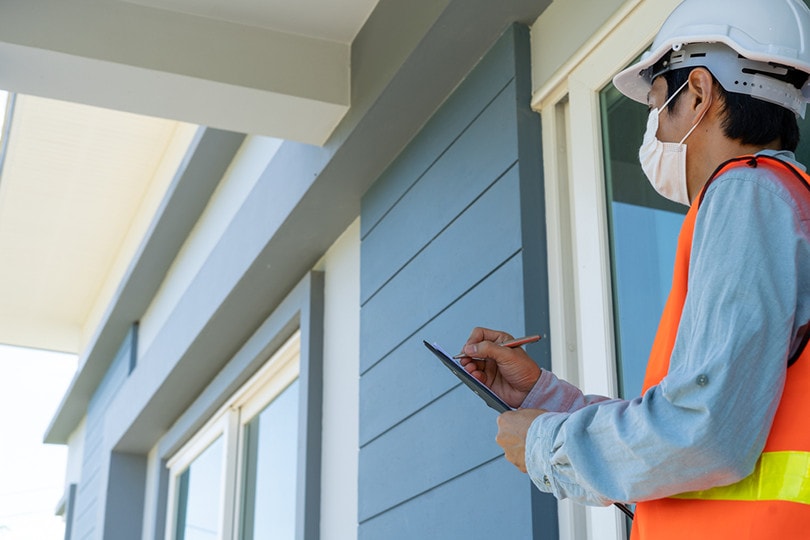My Roof Is Leaking – What Should I Do?
-
Pete Ortiz
- Last updated:

Roof leaks are a common issue that many homeowners have to face at least once in their lifetime. The situation can be stressful, but by resolving the issue promptly, you’ll prevent possible damage to your home.
This article will discuss what to do in this situation and how to take care of the issue, so keep reading to learn more about this common household problem.
Possible Reasons Why Your Roof Is Leaking
Various reasons can cause roof leaks, so we want to point out some of the most common ones. Check them out below:
- Cracked or missing shingles: Damaged roof shingles/tiles will allow water to leak from the roof inside your home.
- Clog in the roof gutters: If there’s a clog in the roof gutters, water won’t be able to travel through them freely and away from the roof. This is a common cause of roof leaks.
- Damage to the roof vent: Broken, rusted, or damaged roof vents can lead to roof leaks
- Puncture in the roof valley: When there’s a puncture in the roof valley, it will likely allow water to find its way to the inside of your home, causing a leak.
- Poor installation of the roof membrane: When you have a roof membrane that isn’t properly set, it can quickly become damaged and cause a roof leak.
- The chimney flashing is causing the leak: Houses with a chimney can have roof leaks due to damaged flashing on the chimney’s base. Typically, flashing allows leaking due to rust, cracks, or improper sealing.
- The skylight is leaking: Homes with skylights can get leaks if the rubber surrounding the glass isn’t sealed adequately.
- The roof is old: When your roof is old, it’s much more likely to experience leaking as the components start to wear down. You might need a roof replacement to prevent further leakage issues if your roof is outdated.

What to Do When Your Roof Is Leaking
1. Contain the leak
First things first, you should contain the leak. To do that, take any container such as an empty jar, a bucket, a pot, a garbage can, or anything else you can find in your home. That way, you’ll prevent your floors and carpets from getting damaged.
Switch the containers whenever you notice they’re becoming full to avoid overflow and reduce the water impact.

2. Prevent your belongings from getting wet
When there’s a roof leak inside your home, all your belongings could get wet and ruined, so it’s crucial to prevent them from getting wet. Try to clear out the leaking area by removing all the furniture or placing a waterproof covering over the items in the affected area.
Most household items can develop mold and mildew when wet, which could cause even more issues inside your home that can be difficult to resolve.
3. Reduce the water pressure
You’ll likely notice a sagging section on your ceiling that’s starting to swell due to the excess water collecting in that spot. You may poke a hole in that spot, although it might seem like something you shouldn’t do. Leaving the water to gather in the area could lead to spreading and cause more damage to your walls and ceiling.
Also, if you let the water collect it might erupt on its own, causing a mess and more water damage. Before puncturing the area, place a container below so the water doesn’t pour all over your floors. Depending on the leak size, you might need to puncture the area multiple times.
4. If possible, fix the leak yourself

Certain leaks are not difficult to fix, so if the leak in your roof is small, you should be able to treat the area without any issues. If that’s the case, you can follow the steps below.
Find the roof leak
Before fixing the area, you’ll need to find the leak—which can be challenging at times. However, it’s not too big of a challenge if you know what to look for. First, check the roof for any signs of penetration.
The easiest way to do this would be to check the roof from your attic, although you can climb on the roof if you don’t have attic space. The affected area will be wet and will probably have mold and black marks around it.
Small leak solution
Once you know where the leak is coming from, you can treat the area by cutting and removing the damaged roof part and replacing with a new part, or patching it if possible.
5. Get in touch with a professional roofing company
You should reach out to a professional roofing company for any complex roof problems and significant leakages. After all, we call them professionals for a reason, and they have experience resolving roof leaks efficiently and rapidly.
Ensure that the company you’re calling is reputable and that they will provide you with the best service for your money.
 Additional tips for homeowners dealing with a leaking roof
Additional tips for homeowners dealing with a leaking roof
There are some further safety measures you can take in situations when dealing with a leaking roof.
Take photographs for your insurance company
Depending on the reason for the leak, you might be eligible to apply for a home insurance claim, which will require you to have evidence of the damage.
Take photographs and document the situation happening to show the insurance company how severe the damage is and if there are other household items compromised due to the leak. If the roof leak meets all your insurance policy requirements, they might fund all the expenses and replace things that got ruined.

Keep up your roof maintenance
Once your roof is fixed and there are no more leaks, you’ll need to practice regular roof maintenance to prevent such issues from occurring again. Here are some tips on how to maintain your roof and reduce leakage possibilities:
- Ensure your gutters are clean so that they don’t clog up
- Inspect your shingles and chimney for cracks and holes
- Always check the roof after severe weather conditions to verify everything is in its place
- Cut any branches that are too close to your roof
What are the dangers of roof leakage?
Roof leaks are annoying, but the worst thing about them is they could even be fatal if you don’t treat them on time.
Damage to your ceiling
When your ceiling gets exposed to water, it will develop black stains, the paint will probably peel off, and your attic could also suffer from water damage. That can lead to issues with your insulation and ventilation, so act promptly if you notice any signs of a leaking roof.
Mold and mildew
Moisture coming through your walls can quickly turn into mold and mildew that will look and smell bad while having a terrible impact on your overall health. Also, mold will quickly spread, causing damage to both your interior and exterior, ruining the floor and wall coverings, ceiling tiles, and wood framing of your home.
Electrical hazards
If the water leaking from the roof touches your electrical system, you could be facing fire or get electrocuted. If you notice large water leaks, it might be good to turn off the electricity in your home until you fix the issue.
 Conclusion
Conclusion
Although a couple of drops of water from your ceiling might not seem like a big deal, they could lead to severe damage to your home and even put your life in danger in extreme cases. When you notice leakage from your roof, act immediately by fixing the problem or calling a professional roofing company to take care of it.
- 7 Key Things to Do If Your Roof Is Leaking
- My Roof is Leaking, What Should I Do? (6 Steps to Fix Your Roof Leak)
- My Roof is Leaking – What Do I Do and the Dangers of Waiting
- What to do when your roof is leaking, and how to find someone to fix it
- 12 Roof Repair Tips: Find and Fix a Leaking Roof
- My Roof Is Leaking | What Should I Do?
- My roof is leaking! what should i do? who should i call?
Featured Image Credit: ronstik, Shutterstock
Contents


